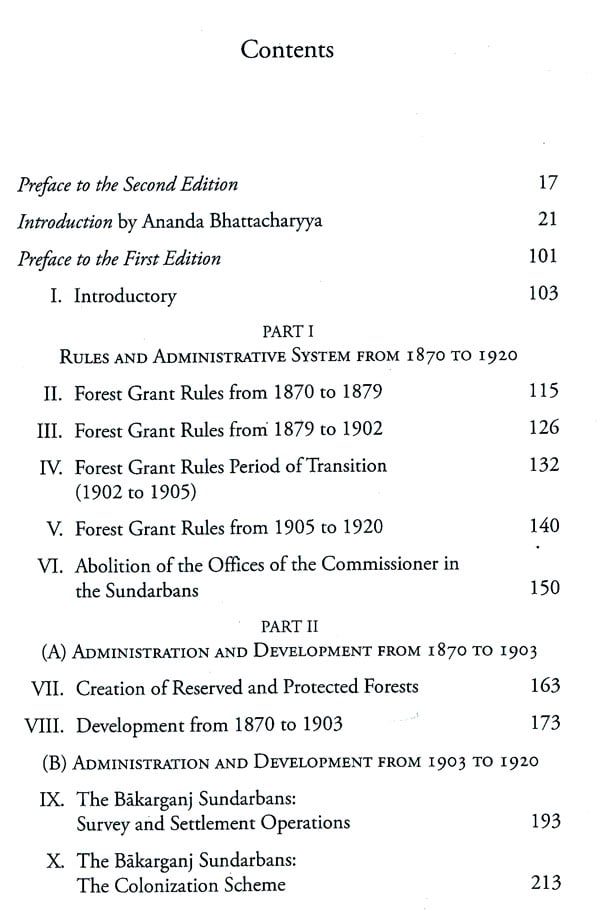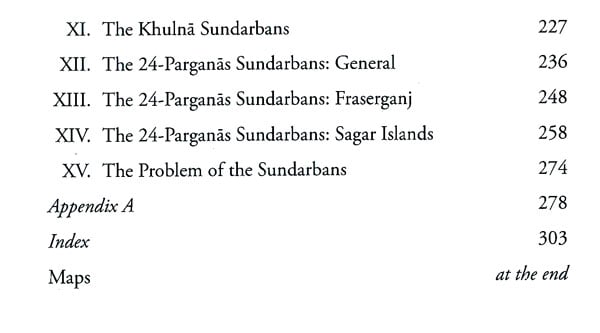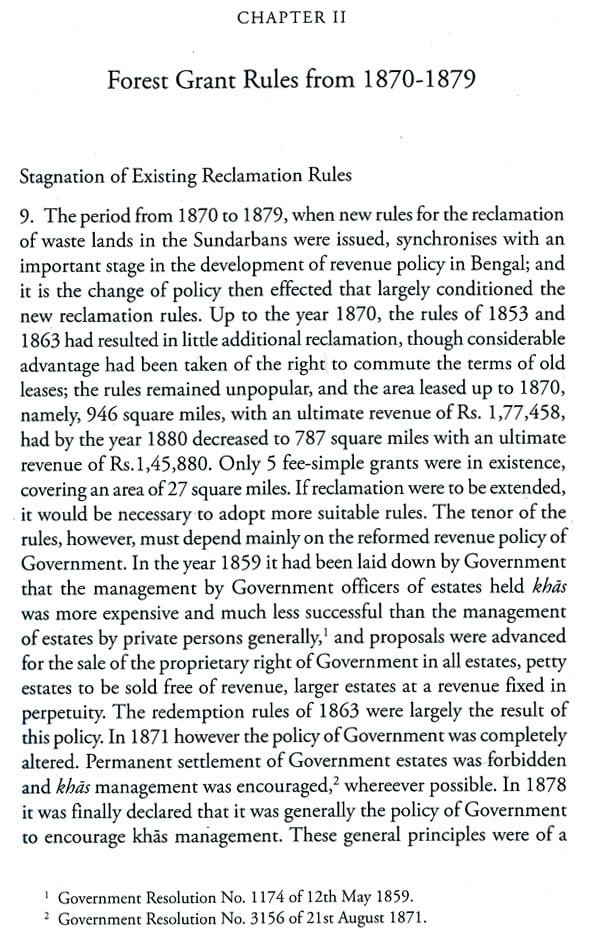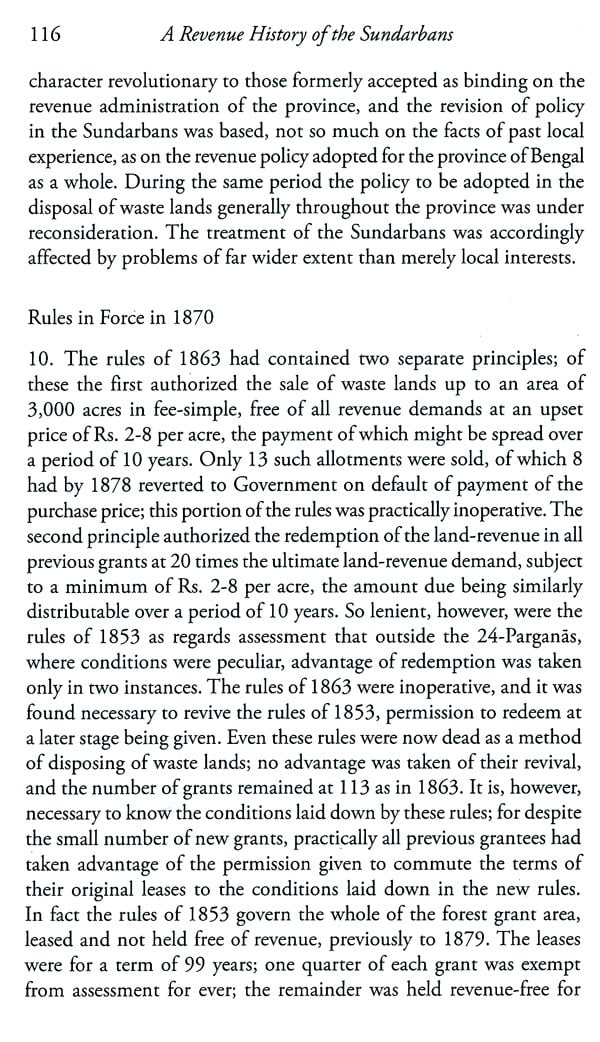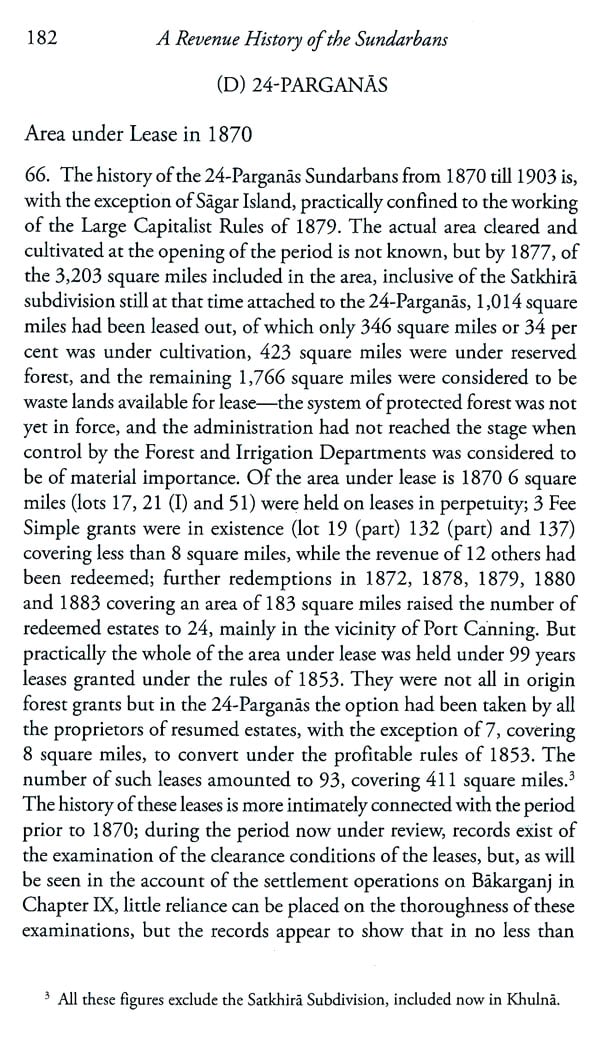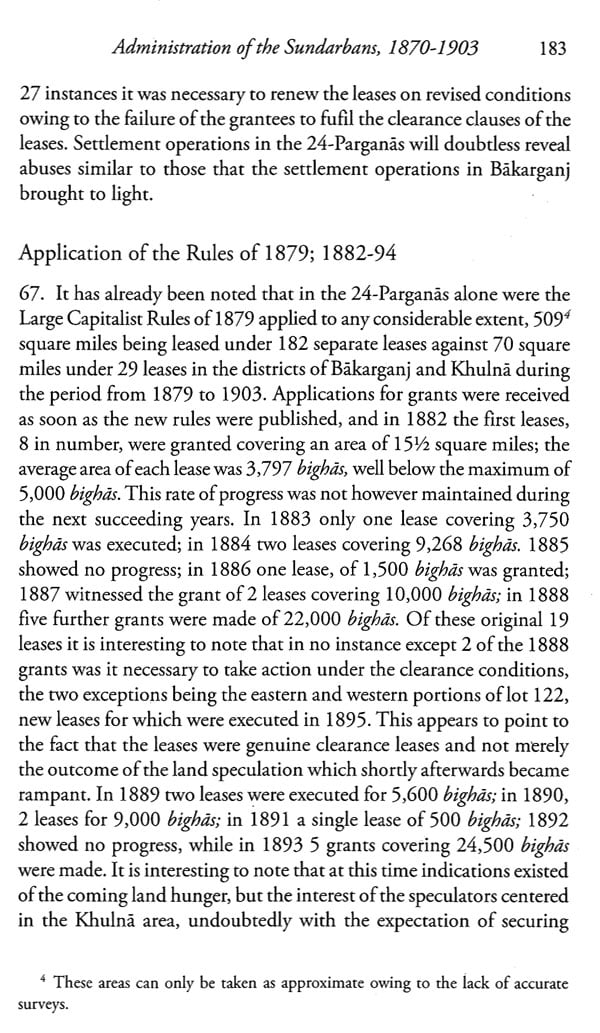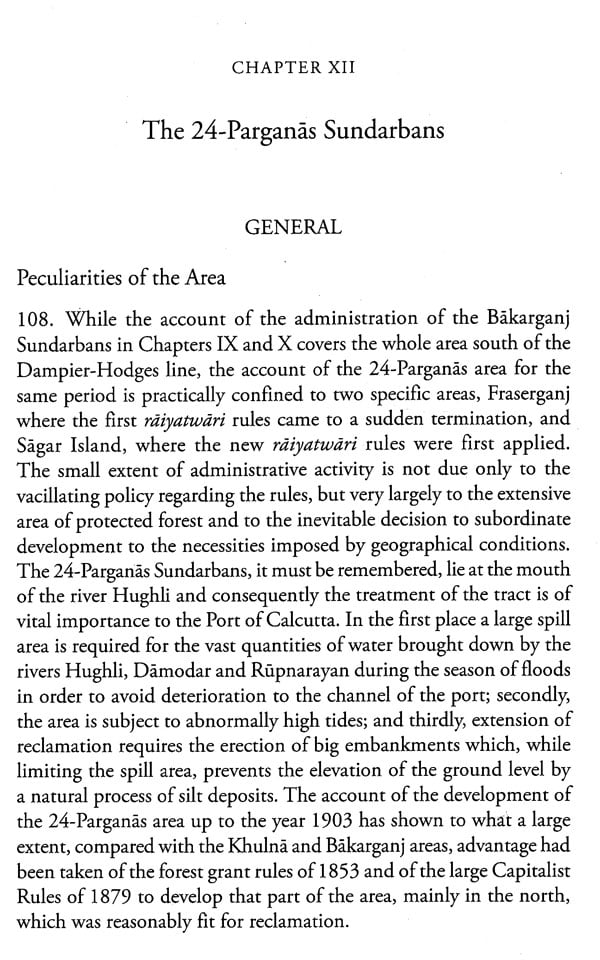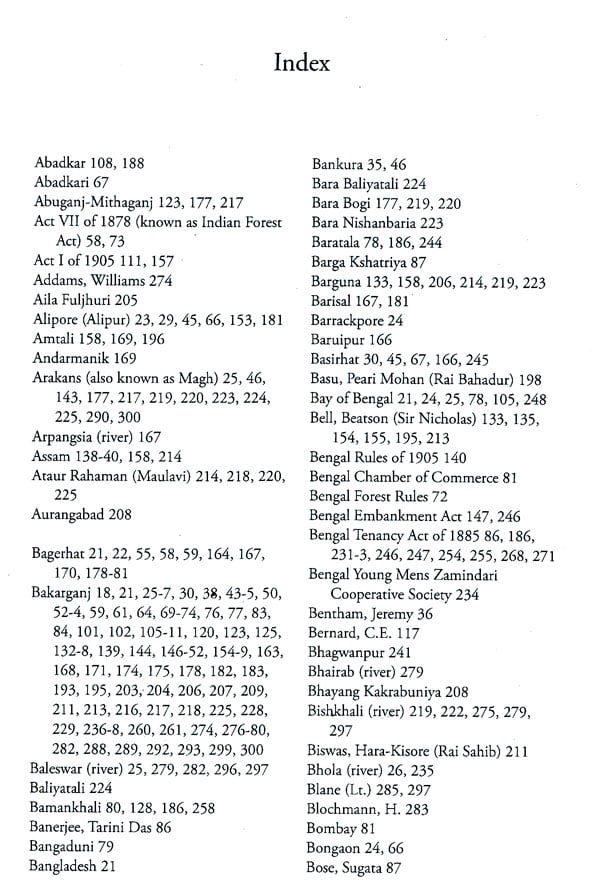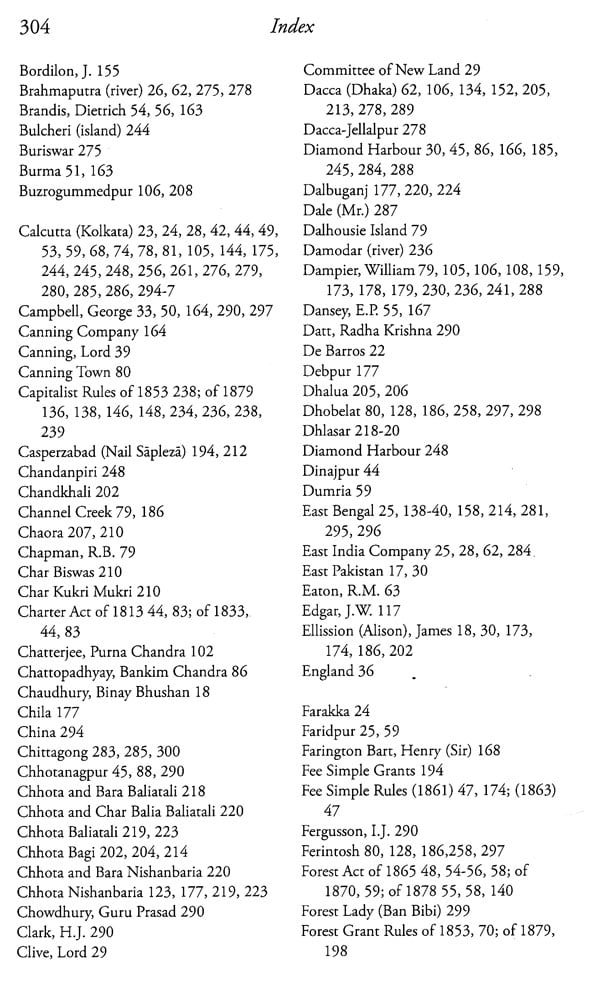
A Revenue History of The Sundarbans from 1870 to 1920
Book Specification
| Item Code: | NAZ715 |
| Author: | F.D. Ascoli |
| Publisher: | Manohar Publishers and Distributors |
| Language: | English |
| Edition: | 2020 |
| ISBN: | 9789388540742 |
| Pages: | 312 |
| Cover: | HARDCOVER |
| Other Details | 9.00 X 6.00 inch |
| Weight | 530 gm |
Book Description
Frank David Ascoli's Revenue History of Sundarbans during the Period 1870-1920 looks at the area bounded on the north by the limits of Permanent Settlement in 24-Parganas, Khulna and Bakarganj districts and on the south by the sea face stretching from the Hughli estuary to the mouth of the Meghna River. A quarter of this large area consisted of water out of 19,501 sq. km . For administrative purposes the Division was grouped in three circles known as the Bagerhat, Khulna and Satkhira. Revenue stations were established at all the principal points of egress from the Sundarbans, and purchasers proceed to the forests and take their requirements from any locality they choose. The process of land formation appears to have been followed by the growth of different vegetation and plants which turned into forest it left uncleared. The entire Sundarban tract is managed by the Forest Department, which has operated a yearly auction for cutting rights for many decades. In this way the Sundarbans emerged between the Bay of Bengal and the fringes of the Bengal delta. The revenue history of the Sundarbans is distinct from that of the rest of the district that presents several peculiar features, so that a separate account of it is necessary. It is apparent that some of the most forbidding remnants of Sundarbans jungle were transformed into fertile rice fields, schools, dispensaries, post offices, markets and cooperative societies.
F.D. Ascoli was born in August 1888 and got his education from Exeter College, Oxford. He was the Managing Director, Dunlop Plantations Ltd.; Director, Dunlop Malayan Estates Ltd. and Semtex Ltd. He entered Indian Civil Service in 1907 and held the post of Secretary, Board of Revenue, Bengal, 1917-20. He was also the settlement officer of Dacca. He retired from Indian Civil Service in 1926.
Ananda Bhattacharyya is Assistant Director of the West Bengal State Archives. His many publications include Sir William Wilson Hunter: Bengal MS Records -A Selected List of 14,136 Letters in the Board of Revenue, Calcutta, 1782-1807, with an Historical Dissertation and Analytical Index, 4 vols (2018); A History of the Dasnami Naga Sannyasis (2018); Adivasi Resistance in Early Colonial India (2017); Remembering Komagata Maru: Official Reports and Contemporary Accounts (2016); Notes on the Races, Castes and Trades of Eastern Bengal (2016); Sannyasi and Fakir Rebellion in Bengal: Jamini Mohan Ghosh Revisited (2014); F.D. Ascoli: Early Revenue History of Bengal and the Fifth Report, 1812 (2019) and Frederick Eden Pargiter: A Revenue History of the Sundarbans from 1765 to 1870 (2019).
The Sundarbans forest is a common property resource in need oflong-term management at both national and the local level. The forest has come under increasing threat as population pressure against available resources on one side and economic pressure to earn foreign exchange on the other combine to force produce gatherers, timber cutters and shell-fish cultivators into the mangrove area. The Forest Department has done reasonably well at protecting specific species of biota. It was in a sense too successful in conserving the forest resources in some of its early management plans. The Sundarbans, while, has been expanding slowly to the south, it has been shrinking more rapidly from the north, as people have cleared the forests and cultivated crops, partly through the design of governments as in the East India Company's efforts to colonize the area in the late eighteenth century, partly through natural migration over time and partly no doubt through the inability of the Forest Department to keep people out of its reserved areas, though in the late nineteenth and twentieth centuries it has done remarkably well in preventing people from settling permanently in the forest tracts, particularly when one considers the population pressures at work. It has been shown that the forest area of the entire Sundarbans has been reduced by half in the last two or three centuries and by 150,000 hectares in the last 100 years. Population growth in the Sundarban area has been substantial, though it is difficult to tell from official statistics just how great it has been. It is clear that the increases in the Sundarbans area, while impressive, are really not much different from Bengal as a whole. Generally, growth was higher in the West Bengal than in the East Pakistan (present day Bangladesh) in the first decade or so after the Partition in 1947.
**Contents and Sample Pages**
